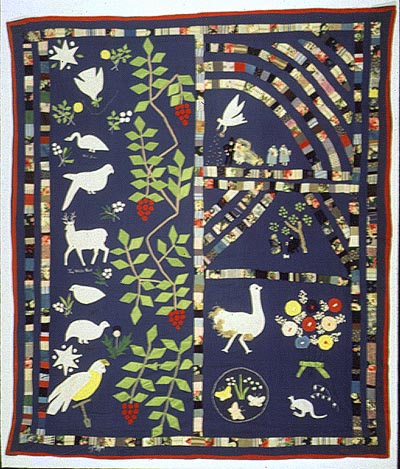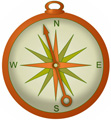Quilt No.973NGA - National Gallery of Australia

The coverlet is decorated with rows of pieced work surrounding appliquéd and embroidered scenes. A panel down the LHS of the quilt and a smaller panel lower RHS depict animals and floral images. In the centre RHS an elderly couple sit beneath a tree. In the upper left a bride and groom accompanied by three flower girls are showered with petals from a wicker basket...
The quilt was made by Mary Jane Hannaford about 1922 at Blanford, near Murrurundi, New South Wales.
"There are seven known quilts initialled 'M.J.H.' five of which are owned by the National Gallery of Australia. Mary Jane's great granddaughter, Miss Joan Swanson, New South Wales donated this quilt to the National Gallery of Australia in 1997." [NGA]
"Mary Jane Hannaford was born in Devonshire, England in 1840. She came to Australia on board the 'London', arriving in Sydney in March 1842. The family moved to Tamworth after the Australian Agricultural Company contracted her Father as shepherd. Her father died in 1852, when Mary was 12. Her Mother remarried 2 years later and they moved to Blanford near Murrurundi, New South Wales. Mary Jane lived with her parents until they died and continued to live with her brother on the farm 'Balmoral'. She never married, but had a daughter, Emily Agnes Hannaford who married George Cady in 1887. Mary Jane died in Blanford in 1930." [NGA]
Related Quilts:
2030 x 2000mm
2010 x 1910mm
2113 x 1995mm
2465 x 2057mm






